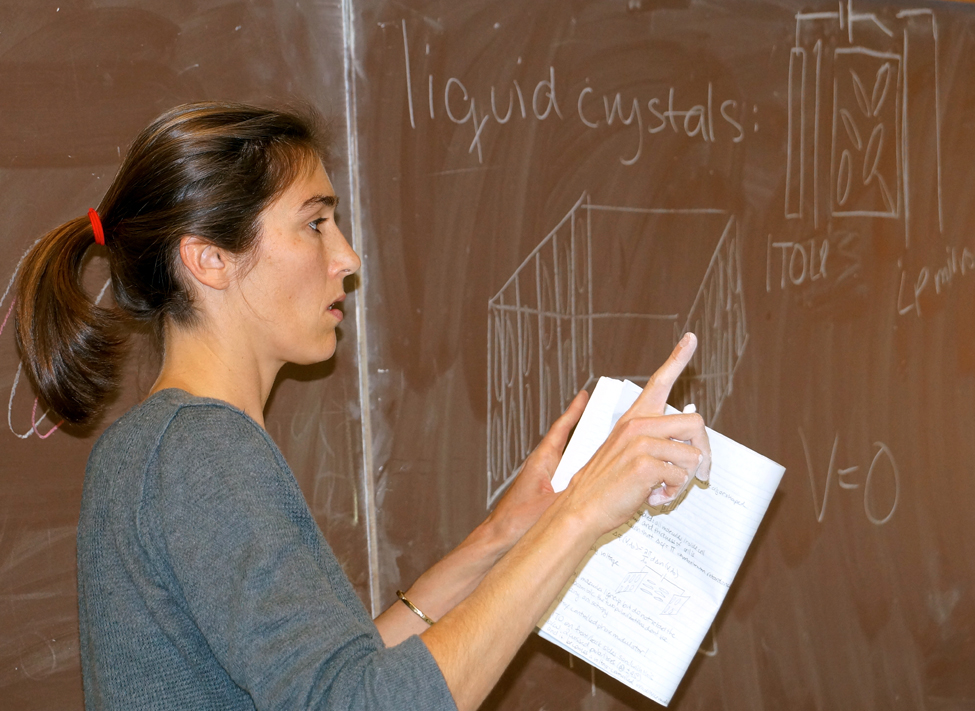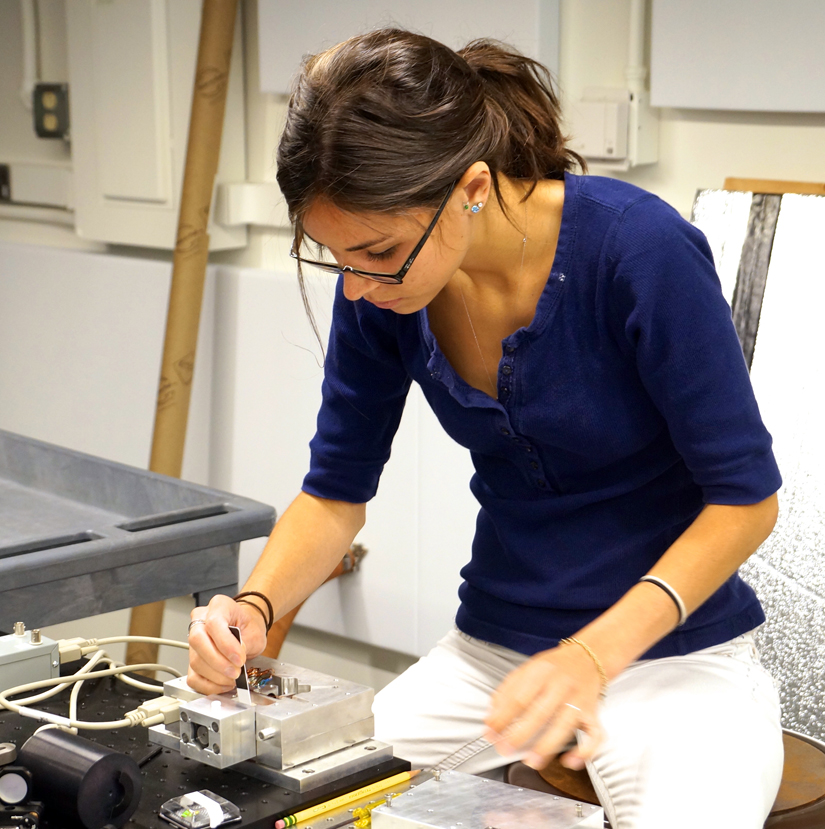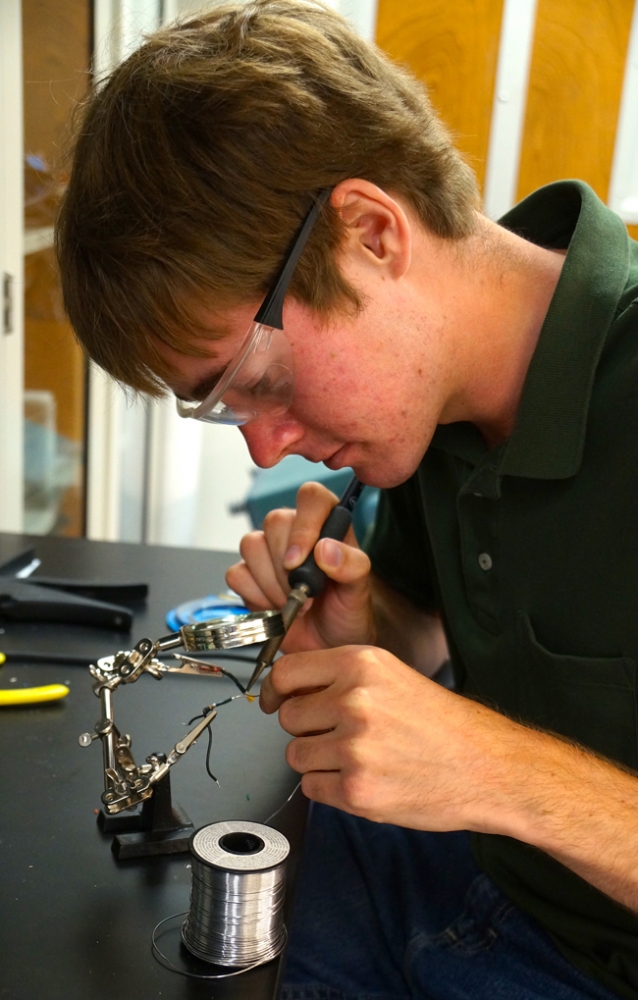
Erica Mason didn't plan to study physics at UC Santa Barbara. In fact, the campus wasn't even her top choice when she was deciding where to spend her undergraduate years. But you know what they say about the best-laid plans.
A Regents scholarship finally tipped the scales, and she landed in the College of Engineering. Four years later, however, the graduating senior has been named the physics department's top undergraduate for 2013. Again, best-laid plans –– and, according to Mason, the best of all possible outcomes.
"Within my first quarter I knew I wanted to switch to physics," Mason said. "I took a course with Professor [David] Cannell, and he taught a way to think that I fell in love with. So I switched to physics and then got incredibly lucky with having stumbled onto such an incredible program."
Mason is not alone in her passion for physics as a field of study or in her esteem for the faculty members who teach and conduct research at UCSB. Since 2008, the number of physics undergraduates has jumped from 34 to 153. For a small department, that kind of growth is astronomical. But with a graduate program consistently ranked among the top 10 in the country, and where research areas include the Large Hadron Collider at the European Organization for Nuclear Research (CERN) and the observation of what appears to be the long sought-after Higgs boson, it may be no surprise.
"The physics department at UCSB, in addition to being ranked fifth in the National Research Council rankings, is also one of the most productive bachelor's programs in the country," said Michael Witherell, vice chancellor for research at UCSB. According to the American Institute of Physics, the 46 bachelor's degrees awarded per year from 2008 to 2010 puts UCSB at number eight in the country.
"And that was before the recent surge in physics majors," Witherell continued. "This year we are going to graduate about 65 physics majors, which would put us third in the country, unless all the others are seeing identical surges." Moreover, he continued, the number of declared physics majors this year is twice the size it was three years ago, when the current graduating class began. "We could easily be catching MIT in the future as the department producing the most physics bachelor's degree candidates in the country by the time this group is finishing."
Recruiting and graduating a sufficient number of majors in science and engineering is a national concern, as noted in a report by the President's Council of Advisors in Science and Technology, and the physics boom at UCSB makes the university a key player in filling the need for more graduates in the science, technology, engineering, and mathematics (STEM) fields. However, as Omer Blaes, professor and chair of physics, noted, that growth also creates its own set of issues.
"Lecture class sizes are simply getting larger and larger," he said. "We've had to move our freshman classes for physics majors into our largest lecture hall, which has a seating capacity of about 300. Upper-division core physics classes have enrollments now of about 100, and it's difficult to find classrooms on campus for this sort of class size.
"Labs are a serious problem," Blaes continued. "We have so far been able to manage by opening more lower-division lab sections, but the upper-division labs will have to be offered more often during the year, which is going to produce a significant drain on resources."
Looking at the big picture of increasing undergraduate enrollment, David Weld, assistant professor of physics, sees something of a double-edged sword. "Viewed from afar, it's a great thing," he said. "It's good for California, and it's good for the United States. But it definitely imposes practical challenges."
So why the sudden attraction to physics as a course of study?
"It's hard to think of a major that better prepares you to go into a broad range of careers," said Weld. "Employers are looking for people who can solve problems that are possibly ill-defined and complex, and finding appropriately reductive ways to solve problems is exactly what physics students are taught."
Added Witherell: "What you get out of a physics degree is not just a body of memorized knowledge. The problem-solving skills are really emphasized, and one can take those and apply them to a broad range of things. Those skills are what any physics department would say it should teach."
And why the attraction to physics at UCSB?
According to Ania Jayich, assistant professor of physics, the department's high rankings may play a role, as well as a high-profile faculty that includes three Nobel laureates. "This department is an excellent one, and there are a lot of really good teachers," she said. "I hear that often from students in my lab. We do a really good job teaching."
Weld concurs. "We are a top five research department, but faculty members still know a lot of the undergrads and are paying attention to teaching, and thinking about teaching in a way you wouldn't necessarily find at a lot of other top five or top 10 schools," he said.
Most people agree, however –– faculty and students alike –– that one of the greatest benefits the UCSB physics department offers to undergraduates is the opportunity to participate in cutting-edge research. "There are a number of fellowships offered to undergrads to do research in experimental groups," said Weld. "Fellowships draw from College of Creative Studies, College of Letters & Science, and community college students. I've had students from all those areas work in my lab, and all extremely successfully."
Mason, who will graduate next weekend, has worked in Weld's lab for a year and a half on a project that will have a significant impact on future research conducted in the lab. The project involves the construction of an external cavity diode laser, as well as the design of a frequency-doubling system for that same laser, for ultra-cold strontium experiments. "It's been my project, and I've had the independence to take it where I want to go with it, to do research on my own and make decisions by myself," she said. "I have guidance whenever I need it, and I have the grad student and postdoc and professor checking my work and making sure I'm headed in the right direction, but I'm not just doing grunt work. It's real research."
Related Links





